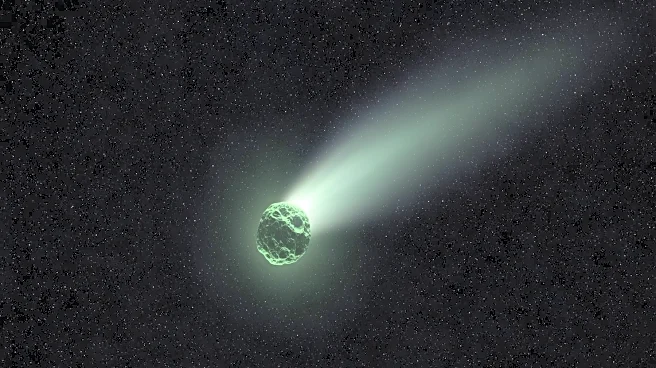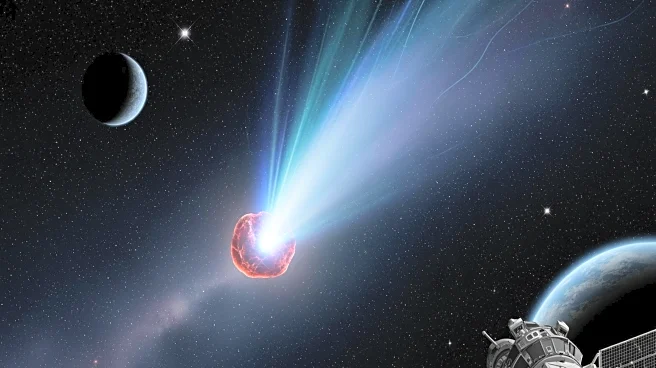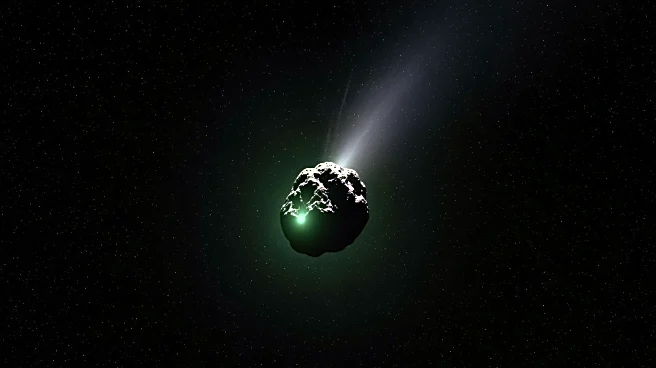What's Happening?
The interstellar comet 3i/Atlas, discovered by the ATLAS survey telescope in Chile, has intrigued scientists with its unique characteristics. The comet exhibits sudden bursts of speed, a dramatic color
shift, and an unusual network of jets. Harvard astrophysicist Avi Loeb estimates its mass to be over 50 billion tons, significantly larger than previous interstellar objects. Despite its proximity to Earth, NASA and ESA have ruled out any threat, as it will remain 269 million kilometers away at its closest approach.
Why It's Important?
The comet's unusual behavior challenges existing scientific understanding of interstellar objects and could provide insights into the formation and characteristics of such bodies. Observations from telescopes worldwide may reveal new information about the composition and dynamics of interstellar comets, potentially impacting theories of solar system formation and interstellar travel.
What's Next?
Telescopes, including Hubble and Webb, will continue to monitor 3i/Atlas, focusing on its jets and radio signals. Upcoming spectroscopic observations may determine the composition of the jets, offering clues about the comet's origin and behavior. The scientific community will likely debate the implications of these findings for understanding interstellar phenomena.
Beyond the Headlines
The comet's behavior raises questions about the possibility of artificial origins, as suggested by some scientists. This could spark discussions on the existence of extraterrestrial technology and its implications for human understanding of the universe.











